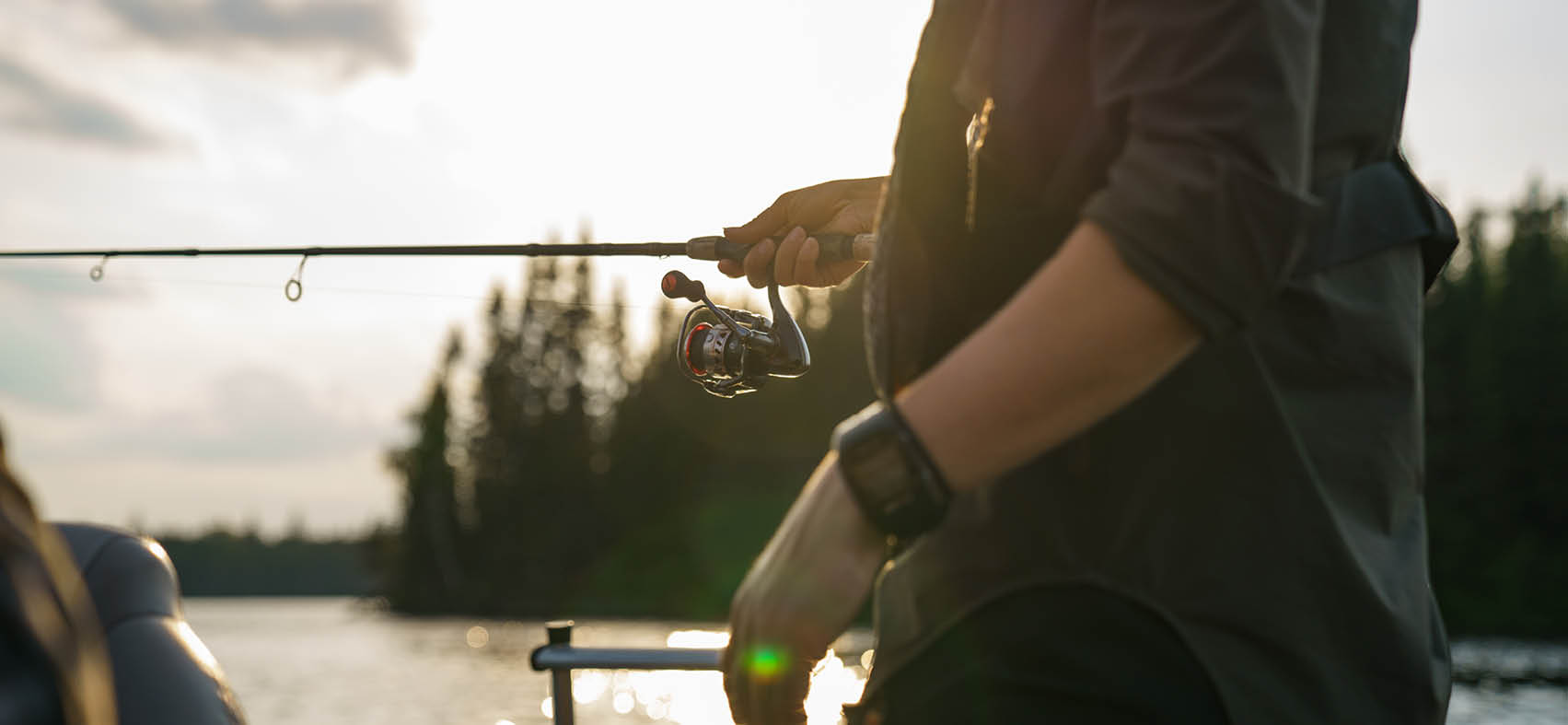CRAPPIE FISHING TECHNIQUES AND TIPS
Fishing | March 27, 2024
SAIL
February 28, 2022

For many, the arrival of spring is synonymous with fishing. Whether you do this activity solo, with family, with friends, or as a couple, fishing is enjoyed by over three million Canadians each year. This activity can seem intimidating to someone who has never done it before or hasn’t had someone show them how to develop the skills to fish. Learn more about spinning fishing below.
Article written in collaboration with FedeCP
The following article will cover:
Also, start looking at different models of fishing rods and reels in order to familiarize yourself with this sport.
Spinning fishing rodsSpinning fishing reels
If you’re not sure what gear to buy, ask yourself what your needs are. Are you looking to fish occasionally with your family? Or, do you want to get serious and start fishing on a regular basis?
If you plan on fishing occasionally, we recommend getting a light spinning rod and reel combo, medium power. This will allow you to get a good feel for all types of strikes.
If you plan on fishing frequently, you may want to purchase your rod and reel separately. This will allow you to set up the equipment perfectly for the type of fishing you plan to do. Be aware that most freshwater fish and even some saltwater fish can be caught with the spinning fishing technique.
If you’re looking for versatility, we recommend a light rod measuring 6 to 7 feet (189 to 213 cm). The longer the rod, the more flexible it is, and the rings on it allow even tension distribution. The most important thing is that the rod be bigger than you and the handle should have a good grip and be comfortable.
For combos, we recommend a medium-powered rod for added versatility.
For spinning fishing and new anglers, two types of reels are generally preferred.
First, there is the closed reel that is covered with a cap. Very easy to use, it is ideal for children and beginners. All you have to do is press a button when casting and release it when you reel in the line.
There is also the light spinning reel, which is more popular. Although it takes a little practice, this reel quickly allows new anglers to adapt and cast further out.
Of course, there are many different types of light spinning reels. They are often categorized by the size of the spool, which ranges from 200, 2500, 3000, or 4000. The greater the number, the more line you can put on the spool.
There are three types of line for spinning fishing.
Monofilament and fluorocarbon are the most used, least expensive and easiest to use. They are thin and less-easily detected by fish.
There is also braided line. This is a much more sensitive and stronger line, but it can cause breakage when you try to get your hook off the bottom of the water. The chances of your rod breaking if you use braided line are higher; it is therefore recommended for more experienced anglers. Also, it is not recommended to put braided line in a closed reel. Closed reels come with monofilament and this is the line to use with this type of reel.
Fluorocarbon line is used in combination with braided line which is much more visible. You can fill your reel with braided line of between 8 lbs and 30 lbs (3.6 kg and 13.6 kg) of resistance, or join it by tying it to a leader of about 7 feet (2.1 meters) of fluorocarbon line for maximum invisibility.
When selecting colours, green or light colours should be prioritized, because they are less easily perceived by fish.
As for the amount of line to wrap on a reel, this depends on the diameter of the line, the size of the reel and the brand. For your convenience, the instructions are written directly on the reel box when purchased.
The line is the element that connects you to the fish. It’s important that it be in good condition and free of knots. It is important to check the quality of the line and dispose of it when it becomes worn. This will prevent you from losing a fish and having to convince your friends that you had a trophy at the end of the line.